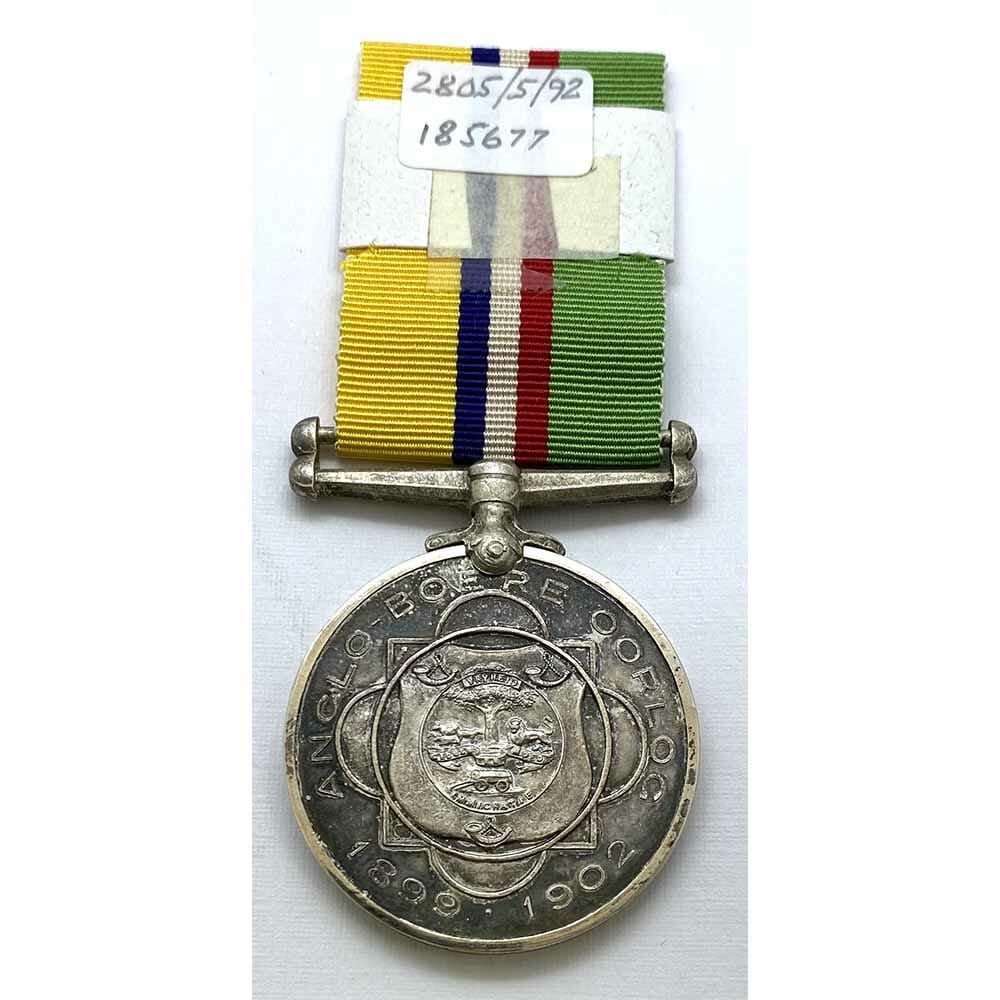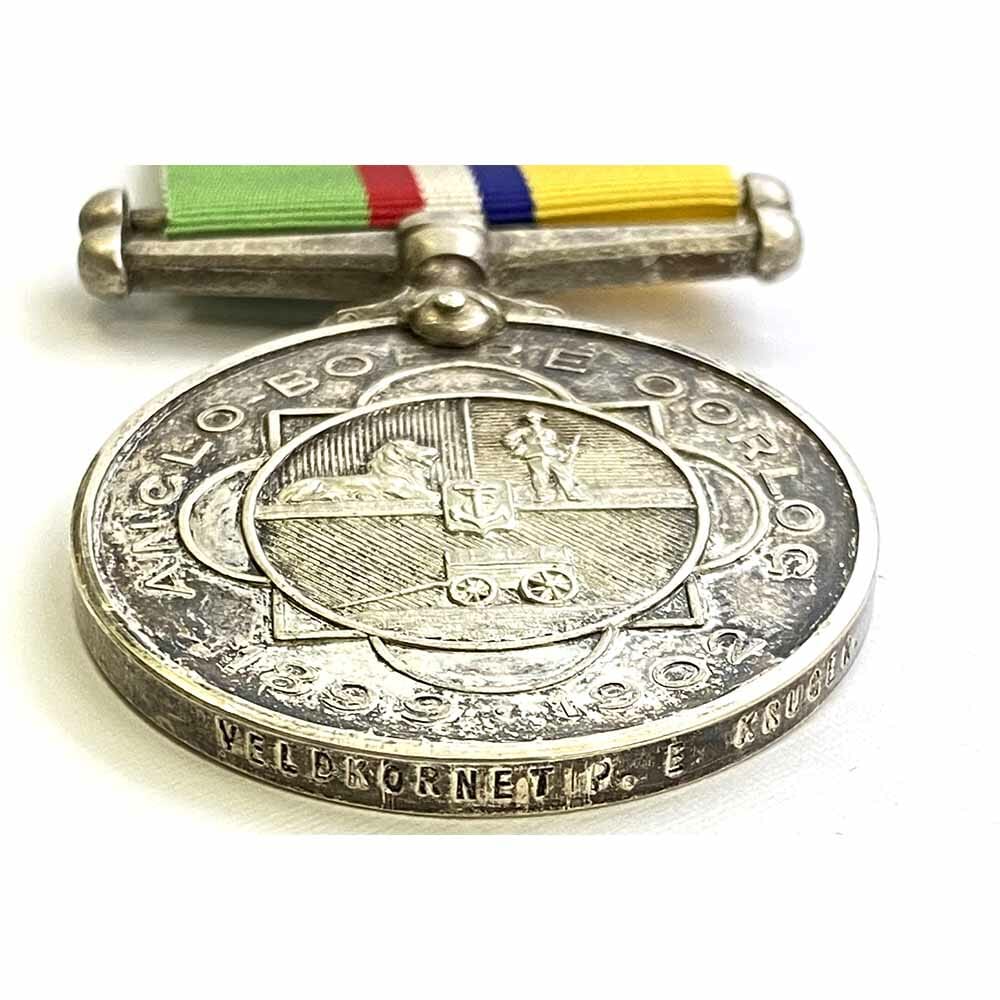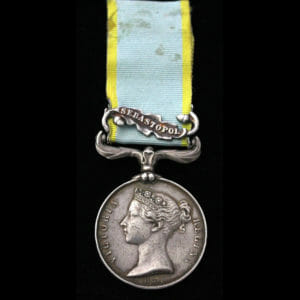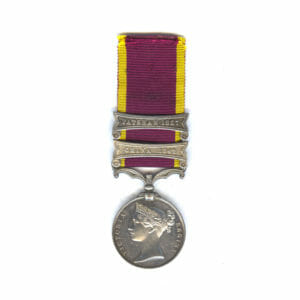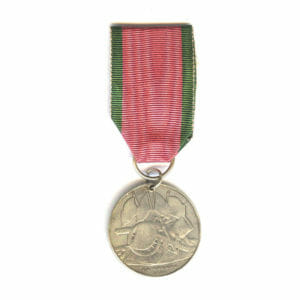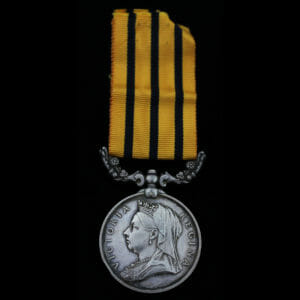Description
Anglo Boer Oorlog Medal, Veldkornet Pieter Ernst Kruger, Wolmaransstad Commando, who was wounded and taken prisoner at the battle of Roodewal and spent a year in a Bombay PoW camp.
Medal is a type 2 issue issued in 1941, when he was in his 70s, officially impressed: “VELDKORNET P. E. KRUGER.”
Veldkornet is an officer rank in the Boer Forces.
Having waited almost 40 years for recognition, his application was accepted and he received his medal for service in the Boer War during late 1941.
The “Medalje voor de Anglo-Boere Oorlog” or Anglo Boer Oorlog (War) Medal was first instituted during 1920 as recognition for the Rebel Boers who fought back against the British force.
The battle of Roodewal was a British victory under Colonel Kekewich of the Siege of Kimberley fame, however for the Boers under Commandant Potgieter and Jan Kemp, they believed that Rooiwal was only lightly held and would be easy pickings, none the wiser to Colonel Kekewich who had heavily reinforced the area, 3000 men were dug in supported by field guns and pom-poms.
Notably during the action, Commandant Potgieter with 1700 mounted riflemen made a fierce charge on the British position, they fearlessly rode at the British line, which initially worked as the terrified British troops and a number of Yeomen units fled their positions, some of them ran for a whole mile before being stopped.
Meanwhile the Boer Charge, headed by Potgieter was now charging into a heavily fortified position and were stopped abruptly by the British volley, they killed 50 chargers outright which included Potgieter, who was later photographed as he lay sprawled on the grass 27 metres from the British lines having been shot dead, wearing his distinctive blue shirt.
Veldkornet Kruger was lucky to be alive, whilst the mounted riflemen accounted for 70 British killed and wounded, the Boers suffered 230 casualties, 50 dead, 130 wounded, with 50 men including Kruger, 3 field guns and a pom pom being captured.
Commandant Jan Kemp also survived, the “recklessly brave” charge over open terrain had been a trademark of his throughout the war, he managed to slip away to represent the Krugersdorp Commando at the Peace negotiations in Vereeniging, where he urged the continuation of the war and was in the minority of only 6 who voted against the peace terms, he was a true “Bitter-Einder”.
Veldkornet Pieter Ernst Kruger, was born during 1867 in South Africa, he was the son of another Pieter Ernst Kruger and Marian Johanna Kruger (Mare) in a massive family where he had 15 siblings.
During his life he married Hester Angenesta Boshoff during 1888, but they divorced and he later married Aletta Maria Doroetha de Lange.
He lived in Karreeboom, Wolmaransstad.
During the Boer War, he was on the side staunchly fighting back against the British, he was a Veldkornet, serving under Commandant Ferdinandus Jacobus Potgieter with the Wolmaransstad Commando.
During the Boer War, he immediately took up arms with his people, serving from 1899 until the day of his release from prison, he was also recorded on his Form B as a veteran of Silkaatsnek, a notable victory for the Boers under De La Rey at the beginning of the Guerilla Phase of the war.
An excellent article on this lesser known battle was published in the South African Military History Journal during 1993, and can be read by clicking the link below.
The Battle of Silkaatsnek by I. Copley, SA Military History Journal
On 11th April 1902, there was the Battle of Rooiwal (Roodewal), at the time in 1902, the war was possibly nearing an end, however there remained a dedicated resistance known as the “Bitter Einders”, De La Rey still commanded 3,000 Boer Guerillas operating in Western Transvaal, and even though the British had stripped the veld of most of their food and supplies and burned down all the Boer farms to deny the Guerillas any shelter, they still managed to keep themselves alive and active in fighting back against the British.
The battle led to the gallant death of Commandant Potgieter, with Jan Kamp escaping, Veldkornet Kruger who likely rode along side his Commandant in the charge was recorded and wounded in action, being taken prisoner by the British on 11th April at the battle, only 3 days later he was recorded and being shipped off to India, he would spend the remainder of the war and some of 1903 in a Bombay Prison until his return home.
He later received his medal during 1941, but passed away soon afterwards during 1943 at the age of 75.
A summary of the battle at Roodewal:
On 6 April, Kitchener put Colonel Ian Hamilton in command of another drive to try to trap De La Rey’s fighters. The plan was to ‘squeeze’ the Boers against the British mobile columns and a line of blockhouses and entrenchments at Klerksdorp. Colonel Robert Kekewich, who was in command of one of Kitchener’s columns, dug in on the hillside at Rooiwal on 10 April with about 3000 mounted infantry, supported by 6 field guns and 2 pom poms. The Boers had scouted the Rooiwal position earlier and found it weakly defended.
Ignorant of the subsequent British deployment, one of their commandos, under Commandant Potgieter of Wolmaransstad and General Kemp, therefore decided to overrun the British position early on the morning of 11 April, thereby escaping Hamilton’s ‘drive’. Potgieter had around 1,700 men, all mounted riflemen.
At about 7:15 am on 11 April they charged the British position on horseback, firing from the saddle. A British picket of 40 mounted infantry was overrun, suffering 20 casualties.
Kekewich’s position was a strong one, but the sight of the charging Boers panicked some of the inexperienced British troops and a number of Yeoman units fled the scene of the battle and were not stopped until they were a mile away from the fighting. A certain Lieutenant Carlos Hickie managed to stop the stampede with a mixture of pleas and threats. In addition, a number of regular British officers on the scene were very critical of the ‘wild’ shooting of their men. In spite of this, the Boer charge was stopped some 30 metres from the British line by artillery and rifle fire.
Among the dead, sprawled in the grass, was Commandant Potgieter, wearing a distinctive blue shirt. He and 50 of his men were killed in the charge. The surviving Boers made good their retreat. Boer fire, delivered from the saddle, had produced about 50 casualties in the British line.
Ian Hamilton and Rawlinson arrived on the scene just as the fighting was ending. However, Hamilton delayed the pursuit of the Boers as he feared that the retreat was a ruse and that his men would fall into Boer ambushes.
At about 9:45, or 90 minutes after the Boer charge had been repulsed, Hamilton sent his mounted troops in pursuit of the enemy.
They captured a further 50 Boers and re-captured the artillery lost at Tweebosch. Kitchener had issued orders that Boers captured wearing British uniforms were to be shot. However, although a number of wounded Boers were indeed wearing khaki, Hamilton ordered that they be spared.

